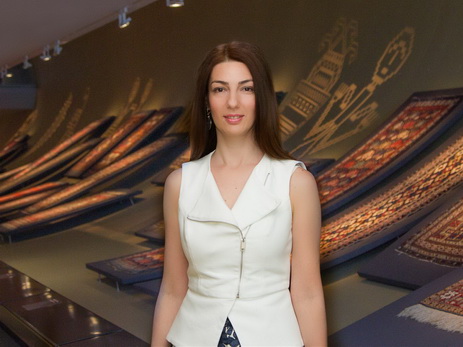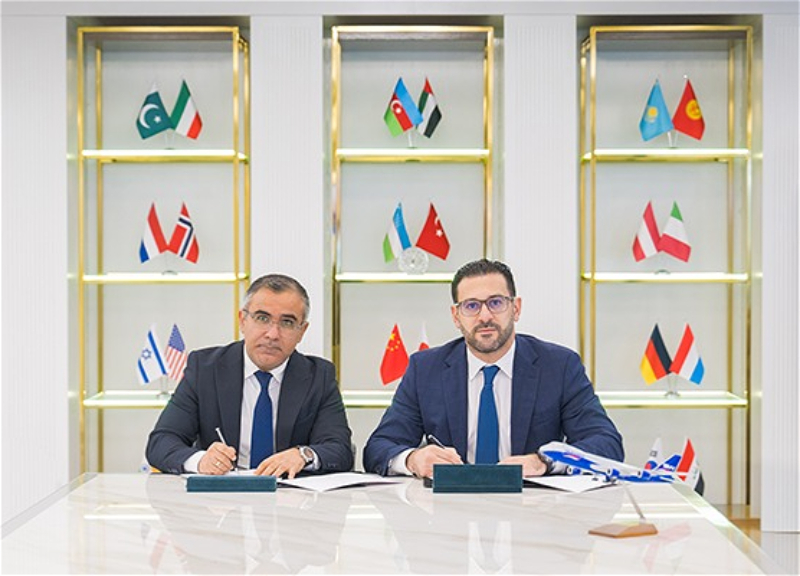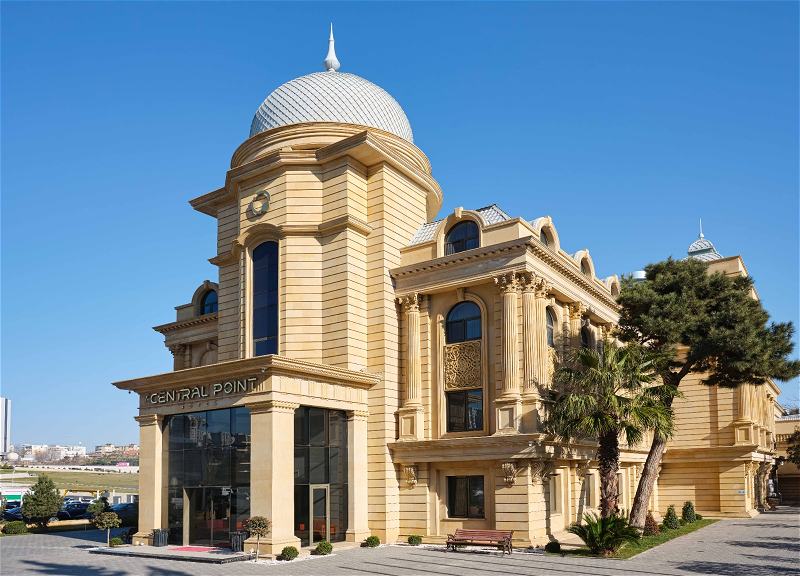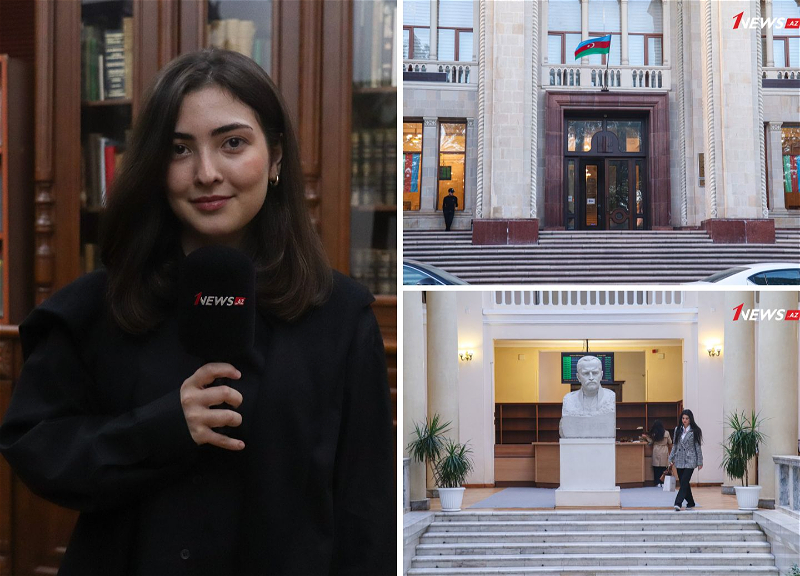Director of the Azerbaijan Carpet Museum speaks on how the Museum should keep the pace with the contemporary society – PHOTO

Unfortunately, some citizens perceive museum excursions as an outdated leisure activity, as they believe these institutions show the past that has long sank into oblivion.
In these circumstances, museums administrations try to make these sanctums of history popular again and use variety of methods aimed at attracting visitors.
These methods include innovative presentation of the antique exhibit; use of the new technologies and events organization aimed at attracting visitors of different age and, of course, Museum promotion in social networks.
We discussed the issue with Shirin Melikova, Director of the Azerbaijan Carpet Museum.
- Shirin-khanum, you’ve been appointed Director of the Carpet Museum just recently. Can you tell us about changes you’ve made so far?
- I was appointed Director of the Carpet Museum on March 2, 2016 under the resolution of Abulfaz Garayev, the Minister of Culture and Tourism of the Republic of Azerbaijan. Firstly, I had meetings with the staff and studied specificities of each section in depth. This helped me define objectives and priorities of the Museum.
We worked on the 5-year strategy of Museum development, made an annual work plan and agreed it with the Ministry of Culture and Tourism of the Republic of Azerbaijan. Under the plan, each section has its own tasks. Thanks to good and qualified personnel we are able to move in a number of directions simultaneously.
.jpg)
First of all, we expand relations with world’s leading museums to acquire their valuable experience and share our own achievements in storing and exhibiting objects of decorative arts.
Also the rotation of the exhibits and Museum exposition is initiated: we started with tufted carpet, embroidery and traditional clothes, then we will change the exhibit of tufted carpet and carpet products.
In order to promote Museum’s collections, we launched the catalogue publication project. We already issued catalogue titled “Shusha branch of the Azerbaijan State Carpet and Applied Arts Museum” which we presented on the day of Shusha’s occupation - May 8. Catalogue on Jewelry Fund and a booklet about the Museum are being finalized. The year 2017 will mark the 50th anniversary of the Carpet Museum. It is planned to issue a book on Museum history.
We work on the website update to reflect the Museum history, collection replenishment, information about each fund and most valuable exhibits, various aspects of Museum activities – scientific, educational and exhibitory. The website will be in three languages – Azeri, Russian and English.
The stage-by-stage digitization of the collection which has over 10,000 items is underway.
.JPG)
The Azerbaijan Carpet Museum is the first specialized institution of the kind in the world and has been a venue for numerous international symposiums and conferences for nearly 50 years.
It should be noted that the Museum is actively involved in exhibition activity. Thus, in June this year the First International Symposium of Turkic Countries “Ornaments - Common Language of the Turkic World” was held at the Carpet Museum under sponsorship of the Ministry of Culture and Tourism and in association with the Yunus Emre Institute. The Symposium was of great importance: representatives of Turkic countries discussed carpet and ornamental pattern matters; focused on ancient links between our peoples; common cultural, mental and spiritual roots. Prominent researchers of carpets from Azerbaijan, Turkey, Uzbekistan, Kyrgyzstan and Kazakhstan were invited to attend the Symposium. All Symposium participants regarded the carpet not just as a work of art but as heritage of spiritual and material culture of Turkic peoples. Organizers of the Symposium decided to produce a carpet symbolizing our friendship and uniting all our peoples. The carpet sketch is made by Museum chief artist Tariel Bashirov. The carpet has been made by skilful workwomen – Museum employees, and we are hopeful that the carpet will be presented to the general public soon.
It has to be noted that two large-scale international projects will be implemented at the Museum later this year. In October, we are going to open “Pirot kilims” exhibition from the Ethnography Museum in Beograd. A workshop is planned to be held in November to commemorate the 110th anniversary of outstanding Azerbaijani scholar and carpet artist Latif Kerimov. The workshop will be held jointly with the All-Russian Museum of Decorative-Applied and Folk Art and attended by carpet experts from CIS countries. Also an exhibition will be held and a book will be published with Latif Kerimov’s sketches and depictions of the Carpet Museum collection.
.jpg)
Our Museum has an excellent exhibition area – a hall for temporary exhibitions together with professional illumination, system of posters – and we have been successful in opening quite a lot of exhibitions and are currently planning to implement some interesting curatorial projects.
One of the largest and most significant projects is establishment of the restoration center. We have already initiated it. In the nearest future it is planned to hold master-classes with participation of specialists from Germany, Italy and Russia. Note that the Museum is in position to organize such a center. It is our duty to bring up a team of professional restorers able to preserve enormous and invaluable Museum collection for future generations.
.jpg)
- Your Museum attracts attention from afar, especially as it has an unusual architectural design resembling an Aladdin’s magic lamp. Besides aesthetics, what can you say about your Museum’s functionality?
– The Carpet Museum was founded in 1967 on the initiative of People’s Artist Latif Kerimov. National leader of the Azerbaijani people Heydar Aliyev resolved to allocate resources for replenishing Museum stock, so the first exposition was displayed in mosque Juma-meschid, Icherisheher in 1972. After our country gained independence, the Carpet Museum was located at the Museum Center. To ensure full and proper presentation of Museum’s richest carpet collection in the world, President of Azerbaijan Ilham Aliyev instructed to build a dedicated building for the Museum in 2007.
Foundation ceremony was held on May 15, 2008 on the territory of the National Park. On August 26, 2014, an official opening ceremony took place on the site. Designed by Austrian architect Franz Yanz, the Museum building is an art object and attracts public’s attention with its unique architectural concept. Both exterior and interior furnishings of the building are originally made. This is a united, mutually related organism with exposition floors that can be seen from different angles. All visible space is covered with splendid carpets that evoke admiration of all the visitors.
Nothing can divert visitors’ attention from exhibits; it is impossible to embrace all diverse compositions and rich ornamental furnishings of the masterpieces. The light is damped in halls; illumination is directed to the exhibit; this makes patterns look more intensive and glimmer with precious colors. One can stand here for hours meditating into atmosphere of refined luxury imbued with peculiar oriental aesthetics. Exposition area is 250sq.m. which enables Museum employees to demonstrate the largest possible portion of the collection.
.jpg)
On May18, the International Museum Day, we opened our jewelry fund. Previously, the Museum did not have an opportunity to show in full its rich and peculiar collection of jewelry items. Our fund is open for visitors three days a week. First, it gives a unique opportunity to get into the depository (we are the only organization with such practice in Baku); second, visitors can see an excellent exposition that covers jewelry items ranging from the Bronze epoch to the mid-XX century.
- The hallmark of the Carpet Museum is an innovative presentation of carpets, our national treasure. Please, tell us how the antiquity and the contemporaneity co-exist in your collection; what is the role of the new technologies and how this contributes to visitors’ interest in the Museum exposition?
– I partially answered this question. The exposition has a large number of diverse and informative exhibits. For instance, the first exposition floor shows weaving evolution, demonstrates video- and animated reels which describe development of napless weaving techniques.
Explications, multimedia files, projections – they all help us understand technical nuances of carpet weaving, get information about handicraft development history, learn traditions and folklore, get acquainted with scientific classification of the Azerbaijani carpet art developed by the outstanding citizen of our country, prominent scholar, carpet weaver and artist Latif Kerimov.
Presentation of materials is multilevel and tailored to visitors’ time and preferences. Some prefer to review exhibits and take many photos; others read explications and explanations to each exhibit; third watch multimedia programs.
In fact, a few days are required to study all exhibits thoroughly, read explications and look through multimedia projects. Some guests visit the Museum several times, study stuff in our library. Our library is a result of years of efforts to collect books, magazines, periodicals on various aspects of decorative-applied art.
We continue replenishing our library stock and subscribing to rare publications. So, we kindly invite all those interested in various aspects of applied art, and ordinary readers to visit our library and reading room which is located on the exposition floor. By the way, since September we offer a monthly ticket to visit expositions, library, lecture-hall, temporary exhibitions, opening ceremonies, etc.
.JPG)
- I noticed that your Museum exhibits works of contemporary authors, for example, “transfigured” carpets by Faik Ahmed; a canvas by Namik Safikhanov made with nanotechnological glassware and so on. Be so kind to inform readers about these works and more: is it so important to dilute the traditional exposition with innovations of this kind?
– A solo exhibition of Faik Ahmed was held at the Museum; however, unfortunately his works are not in the permanent exposition. We are going to collaborate with talented youth and enable them to exhibit their works on carpet themes at our Museum. A relevant project has so far been prepared and I hope that in the nearest future we shall please and astonish our visitors with interesting, creative works of today’s artists and sculptors.
- You’re involved in organizing “Museum nights” when everybody can come and look at the exposition for free. Quite recently, you have arranged “Family festival” with its eventful and interesting program.
How much do events of this kind attract visitors to your Museum and are you planning to continue your work in this direction?
– “Family festival’ was successfully held on June 25-26 and once again reaffirmed that the Museum is not just a place to exhibit antiquities but also an excellent opportunity for interaction, unearthing of creative potential and leisure for people of different age and social groups.
The festival was attended not only by families and children but thalassemia orphans as well. I would like to express my gratitude to the Ministry of Culture and Tourism and festival curator Asli Samedova as well as all those involved in master-classes. A greater part of the festival included workshops of our Children’s Museum which has been successful for 7 years in educational programs for children of different age.
Each last Saturday of the month, the Museum holds the Family Day under Children’s Museum programs. For more details on various programs we offer on the Family Day see our site and Facebook page. Every month we provide interesting master-classes, invite writers to read fairy tales, conduct educational excursions and lectures. We seek to invite people of different age to attend the Museum. Lectures and a project “History of one exhibit” started in September. Also, there are lots of ideas to be implemented. Follow us on the Internet.
.jpg)
- High technologies and Internet are present in all areas of contemporary life. At the same time, new opportunities for interaction with potential and existing audiences are available thanks to social networks.
How is the Carpet Museum using these opportunities? Are there any plans on this track?
– Exactly, it is social networks that spread information in our information era when virtual habitat begins to dominate.
There is a section at the Museum whose collaborators post news. Printed ads are not so popular as are digital ones. This is a Museum’s new approach that makes it possible to deal with the audience, attract new visitors, and maintain connections with our friends and frequent visitors.
Through the Internet the Museum can promote its collection, describe its activities and find a target audience. Thus, the Museum establishes communication between its staff and general public.
Cyber audience interested in Museum’s activities is quite diverse. Social network monitoring helps realize strengths and weaknesses of Museum’s activities, reveal public’s interests, identify its needs. We read feedback on social networks, respond to criticism and are happy to receive favorable opinions. We plan to attract wider audience through posting news in three languages – Azeri, Russian and English, establish closer contacts with potential audience and thus take into account the interests of people when elaborating new projects, exhibitions, etc.
.JPG)
- How active is the Museum in social networks?
- As I’ve noted above, the work with social networks is of particular importance for Museum promotion and attraction of varied public. The Museum is present on Facebook and has its own page in Instagram.
We constantly update information; promote collections, post photographs of exhibits with explanation texts in social networks. Also we should collaborate closer with our subscribers, increase their number and thus avoid just spreading information but provide it to target audience.
- Does your Museum study international experience in effective use of innovative methods of audience attraction? If yes, can you give details?
– Of course, the international experience is studied. Museums are present in the cyber world at various media-platforms, sites, Facebook and Twitter, VKontakte groups, etc. Some of them are successful in blogosphere, have their own pages and gather together people with interest in professional issues or engaged in large-scale projects on promoting specific museums, collections, and certain works of art.
We live in globalization era and it influences all areas of life including culture. At present, museums are not perceived just as depositaries of masterpieces accessible for narrow groups of experts only. Museums increasingly adopt interactive methods of communication with its audience.
Today, many exhibits of MOMA and Louvre Museums, London National Gallery, Museums of Victoria and Albert, Hermitage, etc. can be seen on sites; virtual tours can be taken to get information of any kind. Collections are no more a deep dark secret; many become digital and accessible for growing number of people.
Likes on Facebook and other social media show popularity of museums. People frequently visit museums not only to enjoy works of art and feel the spirit of various historical epochs but also just to quickly walk though rooms, make selfies and check in on Instagram. These are today’s realities, and we, museum workers, welcome any form of interest in our exhibits.
.jpg)
- What can you say about your Museum’s visitors? Is that a mixed audience of different ages or a certain category of experts?
– Our Museum is one of the Baku’s most visited museums. That makes us very happy. The Museum is visited not only by numerous tourists but our compatriots as well. Also, there is the Children’ Museum which is visited by many kids. We arrange festive occasions where pupils of the Children’ Museum present their drawings, music performances, dramatized shows. The Museum is visited by full school classes within the education programs; by families, university students, professional audience, etc. It would be desirable that our compatriots form a habit to spend their time at the Museum. For our part, we shall try to diversify the program, promote our cultural events in advance and welcome guests.
.jpg)
- To end the interview, please clarify your viewpoint on the carpet philosophy - has it lost its previous significance and decorative function in the course of time?
– As a country located at the crossroad between Europe and Asia, Azerbaijan is famous for its ancient and rich history. Geographical landscape of Azerbaijan is notable for its picturesque natural contrasts. Various handicrafts had long been developed in this land of plenty and, first of all, carpet weaving that reached its height as genuine art.
The Azerbaijani carpet seems to have absorbed all colors of the country’s nature. Countless carpet compositions show the dark blue color of the sky, green forests, white snow peaks and crests of flame. Colors of the carpet seem to absorb ruby brightness of pomegranate seeds and goldish radiance of quince, copper of saffron and lilac nuances of grape. All the above are not poetical metaphors: woolen yarns of which carpets are woven are colored into colors of the Azerbaijani nature, fed with its saps and aroma. Subsequently, skilled workwomen knit infinite knots and thus create peculiar pictures of the Universe where the whole centuries-long wisdom of the nation, its expectations and joys, way of life and customs are concentrated. Carpets had incessantly, throughout centuries, been brought to perfection. Elements of ancient magic and folklore were mirrored in the ornament, this product of centuries-long evolution and development. “Ciphered art” notion describes the art of ornament which was created not only as an abstract, unreal world of ideal beauty but as a peculiar language of communication comprehensible for consecrated only.
Philosophical-aesthetic and spiritual-magic categories of ornamental culture were differently perceived at different historical periods. The carpet did not have practical functions only. People believed that symbols and sacral signs depicted on carpets contributed to the welfare and happiness, guarded against evil and protected against diseases.
.JPG)
Harmonious compositions of Azerbaijani carpets have been renowned worldwide since ancient time. One can see their depictions on canvas and frescoes of European artists of the Middle Ages, and later on in the works of modernists. The carpet essentially influenced formation of peculiar artistic language of outstanding Absheron artists.
Geometry of compositions and colors of the Azerbaijani carpets perfectly fit in any setting; our carpets decorate interiors of European palaces of various historical epochs until today. For instance, an architectural masterpiece by Adolph Loos, XX century’s artist – villa of Muller in Prague is entirely covered with Azerbaijan carpets that add inimitable coloring in the interior furnishings. In other words, the carpet has never lost its decorative function. True, its magic-sacral meaning has been lost while significance of ornaments and their Aesopian language are being forgotten. Yet, secrets of country’s history and its relations with ancient civilizations are unveiled for those who know the language of ornaments.
I urge designers to use more frequently traditional Azerbaijani carpets in the décor of modern premises. The best decoration of any interior, the Azerbaijani carpets will surely not only catch an eye and give aesthetic pleasure to people but will increase interest in rich culture and history of Azerbaijan as well.
Leyla Mamedova
The article is written within the framework of collaboration with EU-Eastern Partnership Program “Culture and Creativity”















